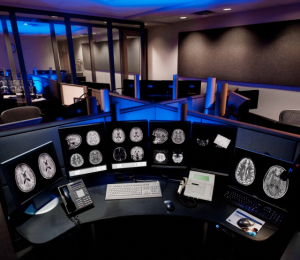by
Olga Deshchenko, DOTmed News Reporter | November 12, 2010
This report originally appeared in the November 2010 issue of DOTmed Business News
A couple of years ago, Tamara James received a call from a physician who had just received delivery of anesthesia equipment and had the vendor awaiting sign-off. The clinician was calling to voice his concern about the screen on the unit not being very adjustable.
“He told the vendor, ‘I don’t think we can accept this because it’s not ergonomic,” says James, the ergonomics director of the Occupational and Environmental Safety Office for Duke University Health System. “He called me and said, ‘Could you please come over here, look at this piece of equipment and tell us if it’s acceptable?’”



Ad Statistics
Times Displayed: 1360
Times Visited: 8 Keep biomedical devices ready to go, so care teams can be ready to care for patients. GE HealthCare’s ReadySee™ helps overcome frustrations due to lack of network and device visibility, manual troubleshooting, and downtime.
After the unit was examined, the vendor was asked to take the product back and make some modifications, significantly reducing the risk of injury for its users.
Such awareness of the importance of ergonomics embodies a culture change that’s making its way through the health care space. Patient safety is always at the forefront of hospital administrators’ minds, says James, but staff safety must also be a part of that equation.
“What we’ve been trying to stress across our health system is that there’s a really close connection between staff safety and patient safety,” she says. “You need to have your staff safe to keep your patients safe.”
The ergonomics sector strives to create a better fit between the environment or the job at hand and the user. Companies that manufacture ergonomic equipment or furniture seek to reduce the potential for injury and maximize comfort for the users.
“It’s important to understand that when ergonomics is practiced appropriately, there are benefits on a lot of different levels,” says Jonathan Puleio, an ergonomist and director of consulting for Humanscale, an ergonomics solutions company. “By improving the fit between the environment and the worker, we not only reduce a person’s risk of developing an injury but we can also dramatically improve the workers’ comfort, as well their performance.”
Computerizing health care
The transition of the health care realm from a paper to a digital environment may seem like a forward-thinking move, but the industry is way behind corporate America. Office environments became computerized throughout the 1980s and as a result, spurred a wave of injuries among employees the following decade.
“Nobody thought about ergonomics in the ‘80s,” says Alan Hedge, professor of ergonomics at Cornell University in Ithaca, N.Y.
Today, as health facilities play catch-up, they are encountering the same problems.

